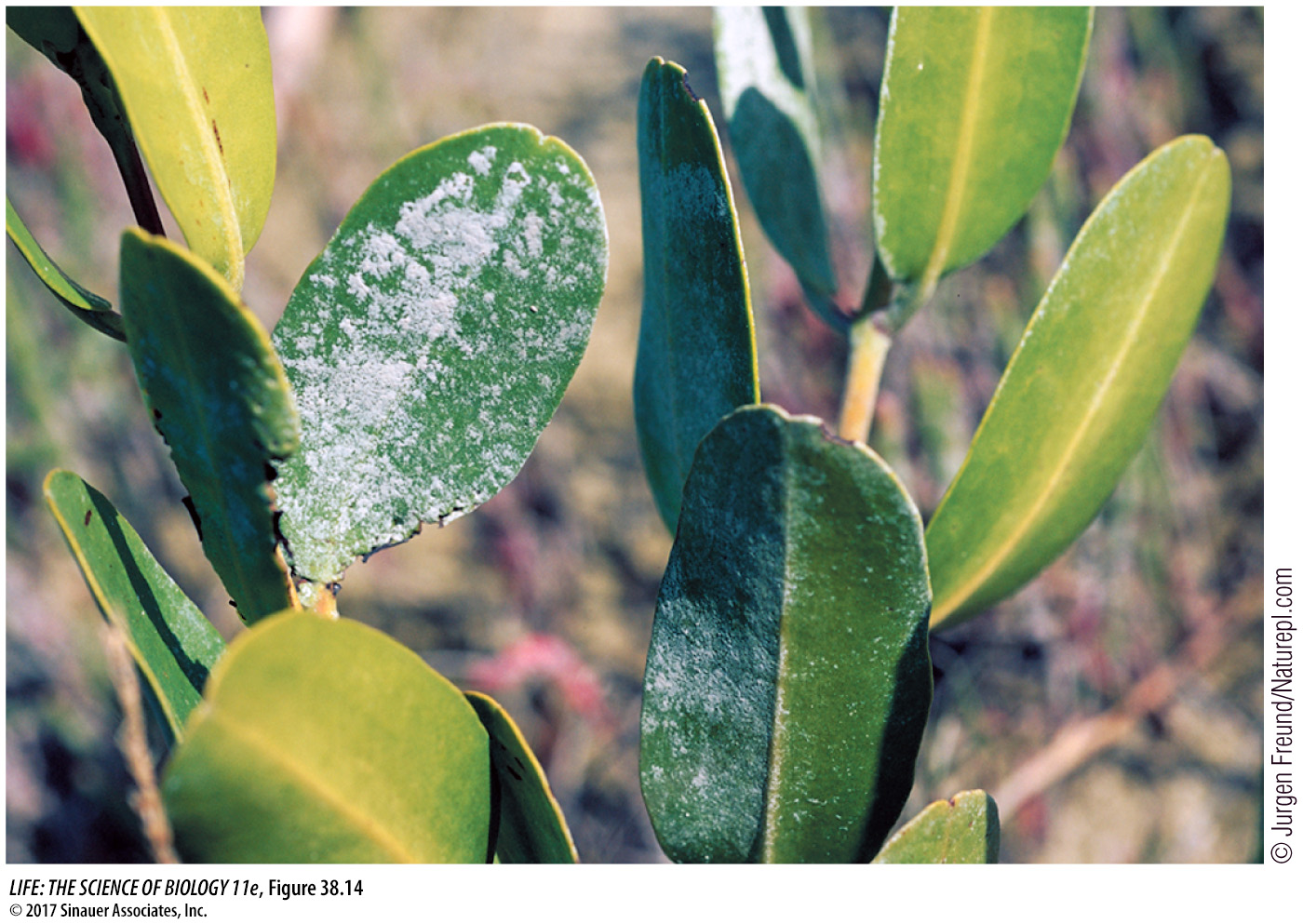Plants can adapt to salty soil
A number of toxic solutes are found in soils, but worldwide, no toxic substance restricts angiosperm growth more than ordinary salt (sodium chloride). Saline—

Saline environments pose an osmotic challenge for plants. Because of its high salt concentration, a saline environment has an unusually negative soil water potential (see Figure 34.2). To obtain water from such an environment, a plant must have an even more negative soil water potential; otherwise water will diffuse out of its cells, and the plant will wilt and die. Plants in saline environments are also challenged by the potential toxicity of sodium, which inhibits enzymes and protein synthesis.
Halophytes—plants adapted to saline habitats—
Some halophytes have other adaptations to life in saline environments. Some, for example, have salt glands in their leaves. These glands excrete salt, which collects on the leaf surface until it is removed by rain or wind (Figure 38.14). This adaptation, which reduces the danger of poisoning by accumulated salt, is found in some desert plants, such as Frankenia palmeri, and in some mangroves growing in seawater.

Salt glands can play multiple roles, as in the desert shrub Atriplex halimus. This shrub has glands that secrete salt into small bladders on the leaves. By lowering the water potential of the leaves, this salt not only helps them obtain water from the roots but also reduces their transpirational loss of water to the atmosphere.
The adaptations we have just discussed are specific to halophytes. Several other adaptations are shared by halophytes and xerophytes, including thick cuticles, succulence, and CAM photosynthesis.